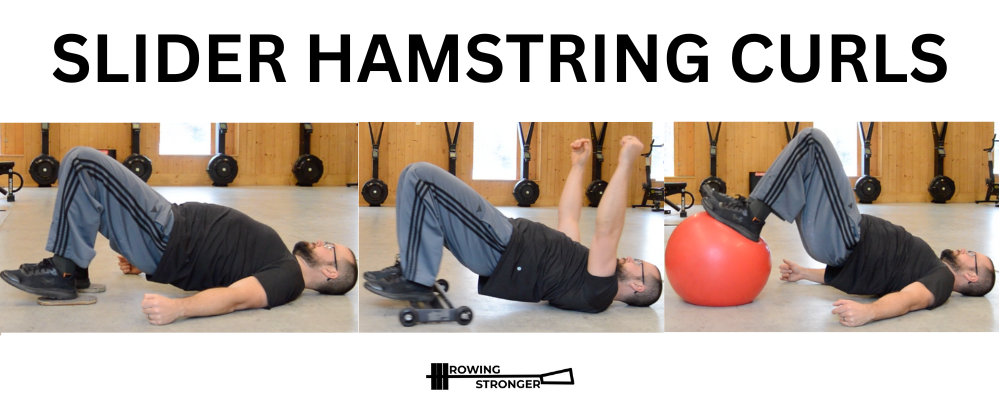Move of the Month: Slider Hamstring Curls
Slider hamstring curls train the hamstrings through knee flexion in a way that we don’t get from most of our endurance sport training. The hamstrings are a two-joint muscle acting both to extend the hip and flex the knee, with help from the semitendinosus and semimembranosus muscles doing the same. Rowing, skiing, and running are all more focused on hip extension than knee flexion. With the high workload of endurance sport training, the missing knee flexion elements of hamstring strength can become undertrained. It’s all one muscle, though, so a weakness in one element of function can negatively affect strength and performance of the other element.
I prefer using slider curl variations versus a seated leg curl or other isolated hamstrings exercises, because the slider incorporates the glutes through the hip bridge position. I am always looking for ways we can develop muscles as part of the bigger athletic systems, instead of isolating them from their muscular counterparts. We can do slider curls with some pretty basic equipment. A standard inflated stability ball or physioball will do. If your floor is slippery enough, you can do slider curls with furniture pads, carpet sliders, or even just some cloth under your heels. There is also a wheeled product known as a glute-ham slider, roller, or glider, depending on the brand. This is useful for a few other exercises as well, takes up a small amount of storage space when not in use, and can be purchased for under $150.
Watch my demonstration video for variations and key technique pointers:
Keep pressure through the hindfoot and generally off the forefoot. This focuses on the hamstrings and glute muscles without the naturally stronger quadriceps taking over.
Maintain the hip bridge position with a neutral spine throughout the exercise. Maintain the “rib-hip stack,” avoiding arching and flexing at the low back.
Work toward achieving full range-of-motion (ROM), with the knees fully extended at the bottom position and fully flexed at the top position.
Any level of athlete can do slider hamstring curls. Beginners may need to focus on the hip bridge position more at first, and do a smaller ROM to maintain the neutral spine. Progress with ROM before going to more challenging variations or adding strain with higher repetitions. A good place to start is 3-4 sets of 5-8 reps with attention to technique and ROM.
Once the athlete can do full ROM with good technique, progress to 3-4 sets of 8-15 reps. We can continue challenging the athlete past this point with different variations. Add load with resistance bands of increasing tension, use just one leg for the lowering phase (two for the harder lifting phase), and finally do them with one leg only. If you aren’t doing them already, the next level of hamstring strength challenge from this point is the Nordic hamstring curl and/or glute-hamstring raise.

